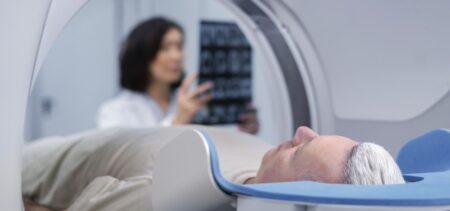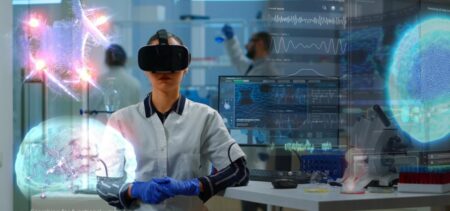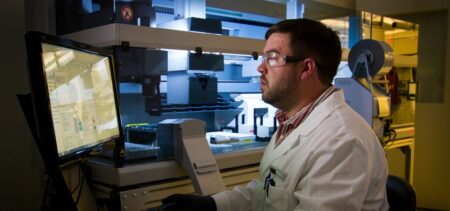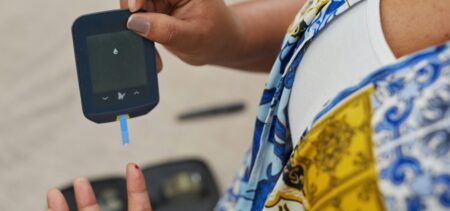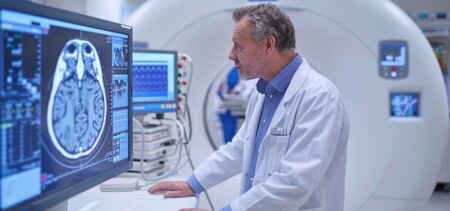The march of progress is relentless, and nowhere is this more evident than in the realm of healthcare. Each passing year heralds innovative breakthroughs that redefine our understanding of medicine, making treatments more effective, diagnosis more precise, and patient care more personalized. Did you know that the use of telemedicine has increased by 50% since the start of 2020? But, which technological advancements are genuinely setting the pace in the world of healthcare? In this editorial, we’ll look into six transformative trends that are revolutionizing the patient care experience.
Telemedicine: The Rise of Virtual Healthcare
Not so long ago, the idea of consulting with a healthcare professional via video call might have seemed far-fetched. Fast-forward to today, and telemedicine is not only real, but flourishing. With the COVID-19 pandemic pushing us towards remote solutions, the healthcare industry adapted swiftly, with virtual consultations becoming the norm for many.
Benefits:
- Accessibility: Patients in remote or underserved areas can receive medical consultations without traveling long distances.
- Convenience: Eliminating travel time means consultations can fit more comfortably into people’s schedules.
- Safety: In situations like pandemics, telemedicine reduces the risk of disease transmission.
Applications & Advancements
Telehealth platforms now incorporate features like real-time translation for non-native speakers, integration with wearables for instant data sharing, and AI-based preliminary symptom checking.
Future Potentials
The continued growth of 5G could enable more data-intensive consultations, including real-time imaging or even remote-controlled procedures.
Challenges
As with any technology, data breaches remain a concern. Ensuring robust cybersecurity measures is paramount. Furthermore, the human touch of medicine can sometimes get lost in a virtual environment.
Broader Implications
If telemedicine continues to expand, it could lead to a shift in the healthcare infrastructure, with more resources dedicated to remote care platforms and training medical staff for virtual consultations.
Artificial Intelligence (AI) in Diagnostics
AI’s ever-evolving algorithms have found a home in diagnostics. With the capability to analyze vast datasets rapidly, AI can identify patterns, anomalies, and even predict potential health issues that might elude human experts.
Benefits:
- Precision: Enhanced diagnostic accuracy reduces false positives and negatives.
- Predictive Analytics: AI can forecast potential outbreaks or individual patient health risks.
- Time-Efficiency: Speedier diagnostics allow for faster treatment.
Applications & Advancements
AI is now being used to interpret medical images, predict patient admissions, and even suggest treatment plans based on historical data.
Future Potentials
As AI algorithms become smarter, they could be tasked with handling more complex diagnostics, leading to what some experts call “augmented medicine,” where AI assists physicians.
Challenges
Trust and accuracy. While AI can process vast amounts of information, it’s only as good as the data it’s trained on.
Broader Implications
Medical training might require more emphasis on understanding and interpreting AI results, ensuring doctors remain integral in the diagnostic process.
Wearable Health Technology
From smartwatches to fitness trackers, wearable health tech has skyrocketed in popularity. These devices monitor various metrics, such as heart rate, sleep patterns, and activity levels, providing users with real-time feedback on their health.
Benefits:
- Proactive Health Management: Users can track their health metrics daily, leading to more informed health decisions.
- Emergency Alerts: Some wearables can detect falls or irregular heartbeats, and alert emergency contacts.
- Data Collection: Continuous monitoring offers healthcare professionals valuable data for personalized care.
Applications & Advancements
Beyond fitness trackers, we’re seeing wearables that monitor glucose levels for diabetics, detect atrial fibrillation, and even those that can predict an epileptic seizure.
Future Potentials
The evolution of wearables might integrate with implantable devices or even “smart clothes” that constantly monitor various health metrics.
Challenges
Data privacy is a significant concern. Who has access to the health data, and how is it used?
Broader Implications
A shift towards preventative medicine. Continuous monitoring could lead to early detection and treatment of diseases, changing the healthcare focus from treatment to prevention.
Robotics in Surgery and Rehabilitation
Robotic-assisted surgeries are now commonplace in many top-tier hospitals. These robots, controlled by human surgeons, offer greater precision during operations. Additionally, robotics is playing a vital role in patient rehabilitation, especially for stroke victims or those with mobility issues.
Benefits
- Precision: Robotic arms can reduce human error, making surgeries safer and more effective.
- Recovery: In rehabilitation, robotics can provide consistent and repetitive motions necessary for effective recovery.
- Remote Surgeries: In some cases, surgeons can operate robots from a distance, bringing expert care to remote locations.
Applications & Advancements
Robotic exoskeletons help paraplegics walk. In surgery, the Da Vinci Surgical System allows for minimally invasive procedures with increased precision.
Future Potentials
With the integration of AI, surgical robots could potentially conduct certain procedures autonomously.
Challenges
High costs and the steep learning curve for medical professionals.
Broader Implications
Robotics could lead to faster patient recovery times, shorter hospital stays, and fewer medical errors.
3D Printing and Bioprinting
3D printing technology has transcended beyond hobbyists and entered the medical field. Prosthetics, implants, and even organs for transplantation can now be printed, tailored to individual patients.
Benefits
- Customization: Devices and implants can be made to fit a patient’s unique anatomy.
- Cost-Effectiveness: As the technology matures, it has the potential to make treatments and replacements more affordable.
- Innovation: The field is rapidly evolving, opening doors to solutions like printing skin for burn victims or tissues for transplants.
Applications & Advancements
Researchers have successfully bioprinted simple tissues like skin, cartilage, and even bladders.
Future Potentials
The ultimate goal is printing complex organs like hearts or lungs, drastically reducing transplant waiting lists.
Challenges
Ethical considerations around bioprinting and ensuring printed organs/tissues are safe and effective.
Broader Implications
A potential paradigm shift in organ transplantation and prosthetics, making them more accessible and customizable.
Augmented Reality (AR) and Virtual Reality (VR) in Patient Education and Treatment
AR and VR are no longer just for gamers. These immersive technologies are finding a niche in healthcare, especially in patient education. They offer a visual and interactive way for patients to understand their health conditions and treatment options.
Benefits
- Engagement: Interactive sessions can enhance patient understanding and retention of information.
- Treatment: VR has been used in therapies, especially for mental health issues like PTSD or anxiety disorders.
- Training: Medical professionals can simulate surgeries or procedures in a risk-free environment.
Applications & Advancements
VR therapies help burn victims cope with pain. AR assists surgeons by overlaying virtual 3D models onto the real world, guiding complex procedures.
Future Potentials
Full-fledged virtual hospitals or clinics where patients undergo therapy in a controlled, virtual environment.
Challenges
Ensuring that the virtual world’s therapeutic effects translate to the real world and handling potential side effects of prolonged VR usage.
Broader Implications
A blending of the digital and physical worlds in medical treatment and training, leading to novel therapeutic modalities and educational techniques.
Final Thoughts
Embracing technology in healthcare is more than just keeping up with the latest trends; it’s about enhancing patient care at every touchpoint. From the first consultation to post-operative recovery, innovations are making the process safer, more efficient, and more patient-centric.
In a world where the digital realm increasingly intersects with every aspect of our lives, healthcare stands as a testament to how technology can genuinely improve human well-being. As we move forward, the integration of these six trends, among others, promises a future where medical care is not just about healing but elevating the quality of life for all.










